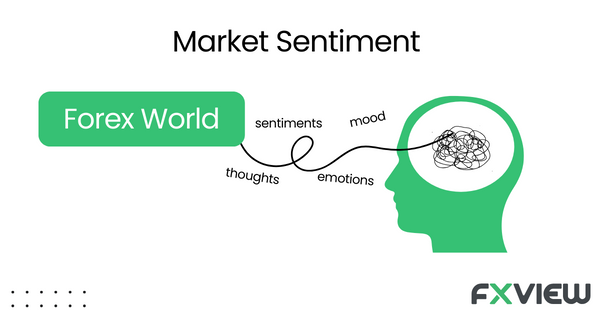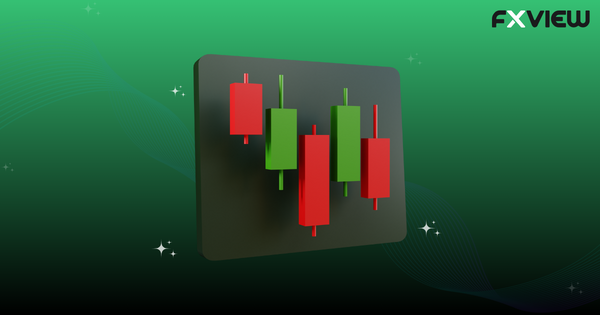
What is Sentiment Analysis in Forex Trading?
Ah, the tumultuous world of Forex trading, where waves of market sentiment can make or break fortunes. If Forex trading were a dance, sentiment analysis in forex trading would be the rhythm, guiding traders’ moves. Stick around as we shed light on this essential topic which may help you fine-tune your dance steps in the Forex market.
What is Market Sentiment?
Imagine you’re at a grand party. Some guests are bubbling with enthusiasm, talking about the great experiences they’ve had, while others are in a gloomy corner, discussing the woes of the world. Guess the general mood of the party? That’s market sentiment in a nutshell.
Similarly in the forex world, market sentiment refers to the overall mood or emotional tone of traders towards a particular currency pair. It’s an aggregation of the possible bullish (positive) and bearish (negative) feelings of the market participants. Essentially, it’s the crowd psychology of the Forex world!

What is Sentiment Analysis in Forex Trading?
If market sentiment is the party’s mood, sentiment analysis in forex trading is your personal radar – always sensing, always calculating. Sentiment analysis in Forex is the method of gauging the general feeling or mood of Forex traders regarding currency pairs. It’s like eavesdropping on the conversations at the party to figure out if it’s time to join the dance floor or perhaps wait a little.
Sentiment analysis in forex trading is important because, in many cases, the market’s emotional temperature can dictate price movement as much as, or even more than, fundamental or technical factors.
Popular Forex Sentiment Indicators
- Commitment of Traders (COT) Report: The COT report, published by the Commodity Futures Trading Commission (CFTC), can reveal the positioning of major traders: commercial traders (or hedgers), non-commercial traders (or large speculators), and non-reportable (small speculators). Watching how these groups shift their positions can provide insights into potential major market moves.
- Retail Sentiment Indicators: Offered by many brokers, these indicators may display the percentage of their traders who are long or short on a currency pair. If 80% of traders are long on EUR/USD, it suggests a potential bullish sentiment.
To know more about Sentiment Indicators, check out our detailed blog: (Market Sentiment Indicators)
Here is an example of an approach to Forex Sentiment Indicators
- Combine with Other Analysis Methods: You may use sentiment indicators alongside technical and fundamental analysis. If technicals suggest a currency pair is overbought, and sentiment is overly bullish, it might strengthen your decision to sell.
- Contrarian Approach: If sentiment indicators show extreme readings, you may consider going against the crowd. Remember the possibility, that when everyone is bullish, it might mean there’s no one left to buy, and the market could reverse.
- Keep Context in Mind: Understand the broader context. If there’s a strong reason (like a significant geopolitical event) where everyone is potentially bullish or bearish, going against the sentiment might not be the best idea.
- Don’t Solely Rely on Sentiment: Sentiment analysis is a tool, not a crystal ball. You may use it to supplement your trading strategy, not as the sole deciding factor.
- Adjust Your Stop-Loss and Take-Profit Levels: If sentiment analysis in forex trading is overwhelmingly in one direction, consider adjusting your stop-loss to protect against sudden sentiment-driven reversals.
Examples of Sentiment Analysis
Picture this: You’re monitoring a popular Forex forum, and suddenly there’s an influx of posts about an imminent economic policy change in a country. The majority feel this will negatively affect the currency. Your sentiment analysis gives you a heads-up, allowing you to position yourself before the big move happens. That’s sentiment analysis in forex trading – always keeping you one step ahead!
Merits & Demerits of Sentiment Analysis
Merits:
Can give an Edge: Sentiment analysis in forex trading may offer insights that aren’t always visible through traditional technical or fundamental analysis. May help in Sidestepping Major Downturns: If the majority sentiment is turning bearish, it might be a sign to tighten your stop losses or exit positions.
Demerits:
Not Always Reliable: Like predicting the weather, sentiment analysis in forex trading isn’t always 100% accurate. Can Lead to Overconfidence: Just because the majority think a certain way doesn’t mean the market will move in that direction.
Conclusion
Sentiment analysis in forex trading plays an important role. However, much like a double-edged sword, it necessitates prudent handling. Effectively leveraging sentiment data requires its harmonious integration with other analytical techniques, potentially assisting traders to make informed decisions. After all, in the ever-fluctuating world of Forex, it pays to keep your ear to the ground and dance to the market’s ever-changing rhythms.
Disclaimer: The information contained in this article is provided for educational and informational purposes only and it is not intended to be, nor does it constitute financial, investment, or trading advice. You should not make any financial, investment, or trading decisions based on the information provided in this article without performing your own research or seeking advice from an independent advisor.



